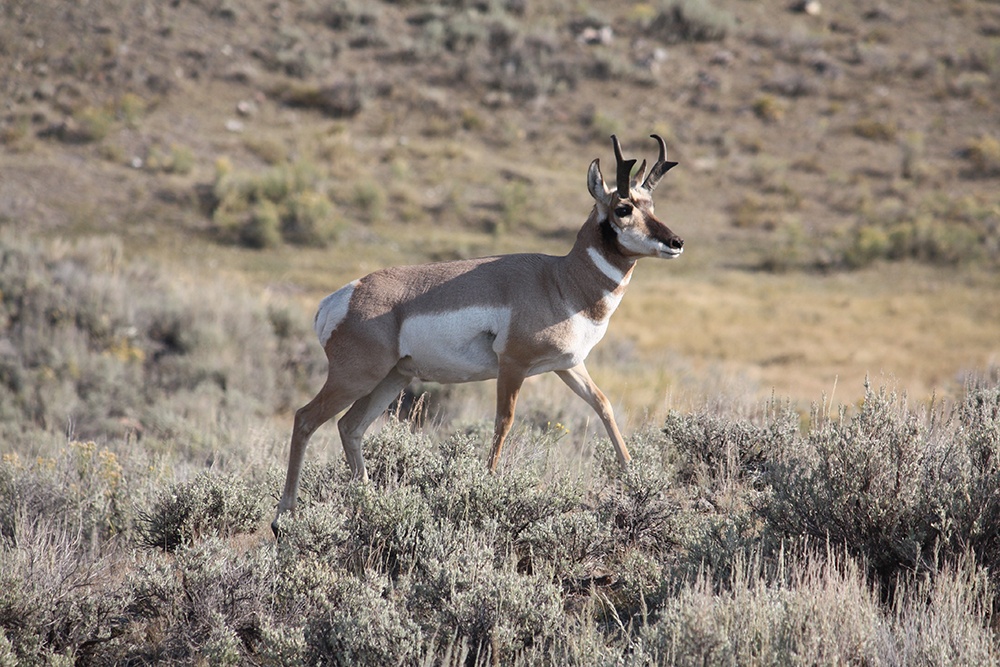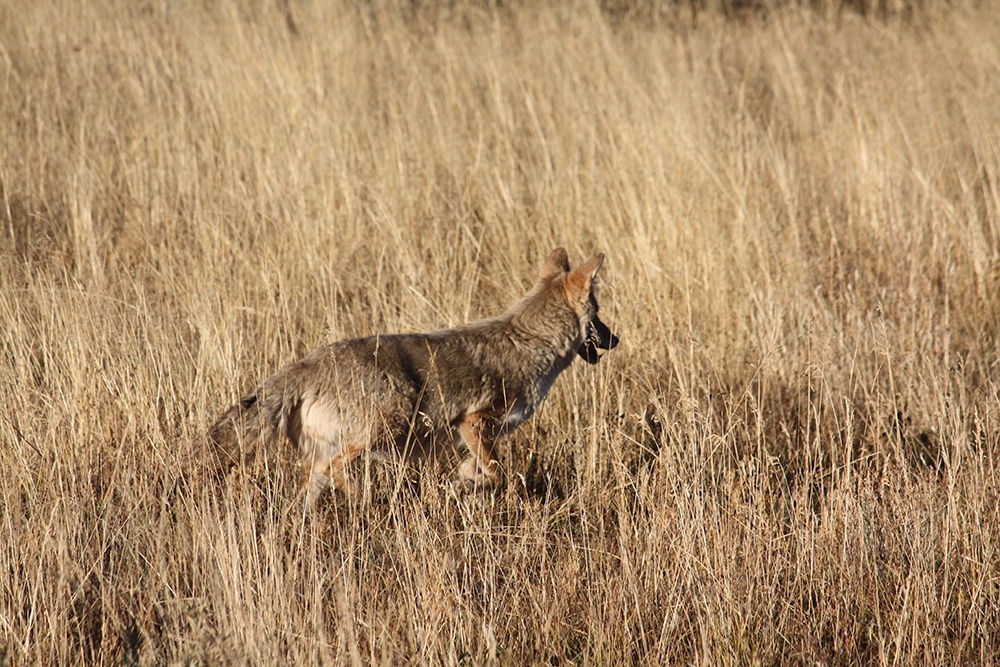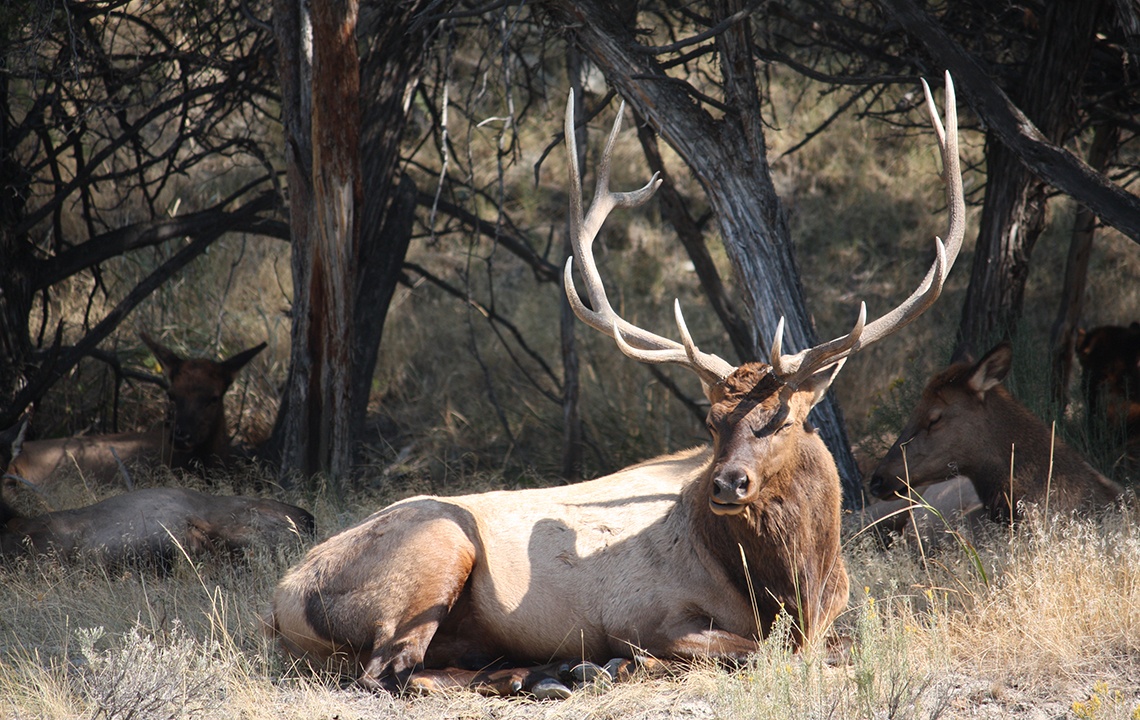We can intrude into the natural environment, or we can attempt to become a part of it. The art of "invisibility" may be as simple as leaving our stresses, concerns and impatience behind and slowing down to the pace of God's wild creatures. Native Americans and other primitive people learned to do this and were some of the best hunters to roam the woodlands.
There are situations that require quick reaction, but in a natural setting, in order to fit into the flow of things, we often find that we must slow our pace and move with utmost caution and patience. It is a fact that most wild animals are very attuned to movement. A quick move will send them bounding for cover. Their very life depends on detecting the presence of predators and avoiding confrontation.
Move Slowly Once the Animal is Looking Elsewhere
 As a traditional archer, I have learned that slow, stealthy movements are often necessary to get into position to secure a shot at wary game such as whitetail deer. In our daily life, most of us have become accustomed to moving briskly about our daily tasks. In direct opposition, wild animals often take a few steps and stop to scan the area ahead of them to ascertain that no predators are present. A well-camouflaged archer may escape detection if no movement gives him away. As these animals are looking ahead for danger, it is often desirable to let them pass our position before we draw our bow to release an arrow. Most animals do not look back for danger, but look ahead to avoid dangerous encounters. The area that they have already passed through is considered to be danger free.
As a traditional archer, I have learned that slow, stealthy movements are often necessary to get into position to secure a shot at wary game such as whitetail deer. In our daily life, most of us have become accustomed to moving briskly about our daily tasks. In direct opposition, wild animals often take a few steps and stop to scan the area ahead of them to ascertain that no predators are present. A well-camouflaged archer may escape detection if no movement gives him away. As these animals are looking ahead for danger, it is often desirable to let them pass our position before we draw our bow to release an arrow. Most animals do not look back for danger, but look ahead to avoid dangerous encounters. The area that they have already passed through is considered to be danger free.
This is not to say that they have no sense of the possibility of danger from behind, but it is less likely. If they hear a noise or catch a foreign scent from behind, they will react.
Dress to Blend into Your Surroundings
The art of connecting with nature and becoming invisible takes practice. It involves wearing clothing that blends into the environment. It does not have to be camouflage, although that is a good choice. It may be as simple as wearing drab clothing that blends in with foliage and tree bark colorations. Usually, wearing a top and pants that are somewhat different helps to break up our outline and makes it less likely that we will be detected.
Understand the Animal's Behaviors
As hunters, we must be aware of the habits, preferences and defense mechanisms of animals that we hunt. Do they have a keen sense of smell? Are they alerted by certain colors? How aware are they of movement? How acute is their hearing? What type of terrain or cover do they prefer? What foods are preferred by them? What are their water requirements and how do they acclimate to water?

All of these are questions that must be answered if we are to be able to take advantage of them in our pursuit. We must cobble together a plan that incorporates this information to be successful.
These same details are important to the birdwatcher and those who enjoy wildlife photography. In order to get that special photo or add that special bird to our life list, it is necessary to become very knowledgeable about the life and preferences of that species.
Be Prepared to Sit Still and Wait, or Walk Like an Animal
Being successful in many of these pursuits means being willing to be stationary in a wilderness setting for extended periods of time. Many times I have been on a deer stand for hours and become weary and discouraged of the likelihood of seeing a deer. More often than I like to admit, I have slowly turned to gaze at a spot close at hand for what seemed to be the thousandth time and spotted a deer that magically appeared there. "No way that I could have failed to hear the approach"! Only moments before, the location was empty and void of life.
Seeing wildlife that is unaware of our presence takes patience and skill. It involves long hours of sitting in one spot, or we must learn to walk like an animal, taking one or two steps, pausing to look and listen and then moving on stealthily. If we are walking through woodlands, each step opens up new lines of vision through the trees that can reveal an animal.
If you are looking for deer or other large game, look for horizontal lines in the forest. There are some fallen logs that fit this profile, but most of the elements you'll see in nature -- such as trees -- will be vertical. Horizontal lines could well be the back of a deer, coyote, bear or some other mammal.

When looking for birds, watch for movement and listen for signs of bird. As you move along and hesitate often, look to the treetops and bushes for movement. Also, use your ears to detect birdsong, tapping of beaks on tree bark or nuts and the sound of litter falling onto the forest floor.
Look for the Same Foods the Animal Will Be Looking For
As you move through the terrain, keep an eye out for food that may be attractive to the species that you are seeking. Acorns, wild grapes, greenbrier, mushrooms and honeysuckle are attractive to deer. Acorns, wild berries and grapes, weed seeds, dogwood berries and insects are preferred foods for many birds.
Hawks are predators and will be soaring or sitting on high perches watching for movement of small mammals such as squirrels and mice, birds and snakes. When detected, they will dive at a great rate of speed to capture their prey.
Owls have a similar diet to hawks, but most of them feed at night and are not as easily detected by birdwatchers. One method of detecting them is to investigate any hollow trees and search around the base for owl pellets. Owls regurgitate the bones, fur and feathers of their prey in the form of pellets that appear below their nests in hollow trees. Owl pellets are interesting for study, as they contain small skulls and bones that may be intact.
Nature is a mystery that we must investigate cautiously if we are to learn to fit in and become a part of the environment rather than an intruder. If you step lightly and slowly with all senses alert, you will see so much more when you take that walk in the woods.
All photos in this article were taken by the author while blending into nature in the ways described in this article.



.jpg)




















